 Travel
Travel  Travel
Travel  Creepy
Creepy 10 Haunted Places in Alabama
 History
History Top 10 Tragic Facts about England’s 9 Days Queen
 Food
Food 10 Weird Foods Inspired by Your Favorite Movies
 Religion
Religion 10 Mind-Blowing Claims and Messages Hidden in the Bible Code
 Facts
Facts 10 Things You Never Knew about the History of Gambling
 Weird Stuff
Weird Stuff 10 Cool and Creepy Facts about Collecting Tears
 Humans
Humans The Ten Most Lethal Gunslingers of the Old West
 Misconceptions
Misconceptions 10 Phony Myths and Urban Legends That Just Won’t Die
 History
History 10 Amazing Roman Epitaphs
 Travel
Travel Top 10 Religious Architectural Marvels
 Creepy
Creepy 10 Haunted Places in Alabama
 History
History Top 10 Tragic Facts about England’s 9 Days Queen
Who's Behind Listverse?

Jamie Frater
Head Editor
Jamie founded Listverse due to an insatiable desire to share fascinating, obscure, and bizarre facts. He has been a guest speaker on numerous national radio and television stations and is a five time published author.
More About Us Food
Food 10 Weird Foods Inspired by Your Favorite Movies
 Religion
Religion 10 Mind-Blowing Claims and Messages Hidden in the Bible Code
 Facts
Facts 10 Things You Never Knew about the History of Gambling
 Weird Stuff
Weird Stuff 10 Cool and Creepy Facts about Collecting Tears
 Humans
Humans The Ten Most Lethal Gunslingers of the Old West
 Misconceptions
Misconceptions 10 Phony Myths and Urban Legends That Just Won’t Die
 History
History 10 Amazing Roman Epitaphs
10 Things You Might Run Into While Visiting The Mariana Trench
We have fully realized maps for just about everything in our Solar System—the Moon, Mars, even Uranus. But one place we’ve barely mapped out at all is closer to us than any planet or satellite—the ocean floor. Despite only being a few miles away from us, we’ve only managed to map about five percent of our planet’s seafloor, officially making it a bigger mystery than even Pluto.
The absolute deepest part of our ocean, the Mariana Trench, is more famous than the rest of the ocean floor, though we still know next to nothing about it. At close to seven miles (11 km) deep, and with over 1,000 times the water pressure found at sea level, going down there to take pictures and concoct a map is akin to suicide.
But thanks to modern technology, and a few brave souls who risked a crushing death in order to explore the trench, we do know a few things about what’s down there. So if you’re ever in the mood for an alternative vacation, here’s what you might find when visiting the Mariana Trench:
10 Ludicrously Hot Water
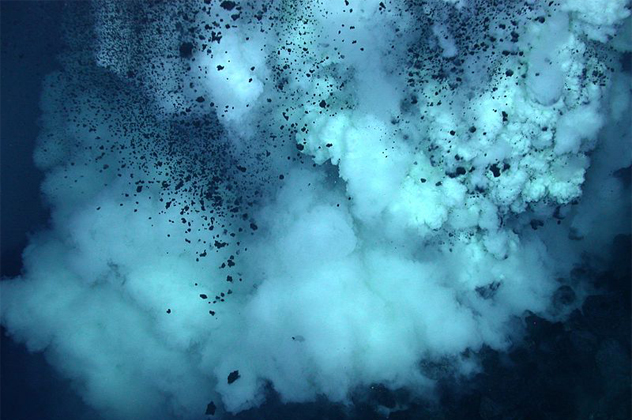
When you get as far down into the water as you would when visiting the Mariana Trench, expect things to get very cold, very fast. At that depth, the water temperature is barely above freezing, ranging from a frigid 1 °C (34 °F) to a balmy 4 °C (39 °F). So pack clothing for both occasions, is what we’re saying.
You’ll especially want your summer wear if you venture close to the hydrothermal vents that litter the Trench roughly a mile (1.6 kilometers) down. In a world where the water is one or two steps away from turning to ice, there are several vents that shoot out water close to 450 °C (700 °F). Alternately known as “black smokers,” the water in these vents shoots out tons of minerals that help life in the area survive and thrive. The creatures that call the Trench home need these minerals and the energy they produce, as even one mile down is too far for the Sun to have any effect on them. It’s either hang around the super-hot water, or perish.
Unbelievably, said super-hot water does not boil, despite being hundreds of degrees above the boiling point. This is due to the intense water pressure (over 155 times that of the surface) that you would find a mile down. That pressure kills off the boiling effect, though not the temperature.
9 Giant Toxic Amoebas

If you saw a tiny newborn puppy, roughly four inches in size, your first reaction would probably be an overwhelming desire to hug the precious little guy. On the other hand, if you saw a four-inch (10 cm) amoeba, would you want to hug it? Or do anything aside from run away screaming?
If so, you might want to reconsider your trip to the Mariana Trench, because giant amoebas are everywhere down there. Called xenophyophores, these single-celled organisms have likely become so big precisely because of their environment—the cold temperature, high pressure, and lack of sunlight all contribute to this amoeba’s relatively nightmarish size.
If that’s not enough, they also appear to be superhuman, immune to many elements and chemicals that would kill most other species, including our own. By ingesting the minerals and particles in the water, the xenophyophores have developed a tolerance to uranium, mercury, lead, and other things that could kill us if left unchecked.
Also, don’t think that you’d eventually stop seeing these adorable critters the deeper you get. They’ve been spotted as deep as 6.6 miles (10.6 km) down, and scientists would not be surprised to one day find them even deeper than that.
8 Pure Liquid Carbon Dioxide
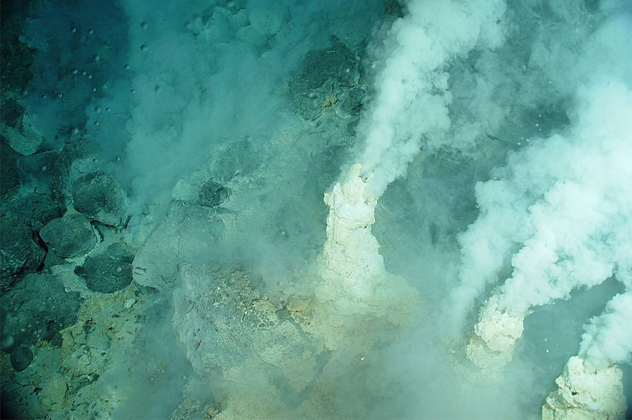
Most of the hydrothermal vents mentioned earlier spew nothing but regular old water that will singe your skin if you get anywhere near it. One vent, however, raises the game to an utterly ridiculous level, releasing not water, but pure liquid carbon dioxide.
Outside of the Okinawa Trough near Taiwan, the Champagne Vent of the Mariana Trench is the only known underwater area where liquid carbon dioxide exists. Discovered in early 2005, the vent got its name because of the bubbles of what scientists originally thought was harmless water that sort of looked like Korbel. Upon closer inspection, they realized that those bubbles were actually CO2.
While ingesting pure carbon dioxide would clearly be bad news for any of us, it seems that vents such as this one, deemed “white smokers” due to their lower temperatures, might be the source of life itself. As the old “primordial soup” theory loses more and more ground, the idea that life began in deep waters, around vents such as Champagne, has gained more credibility. A white smoker such as Champagne, with its lower temperatures and abundance of chemicals and energy, could well provide the perfect recipe for life to form and thrive.
7 Clams
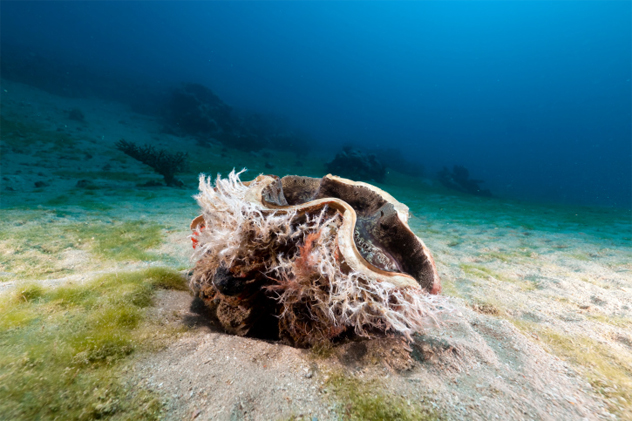
The intense water pressure down in the Trench makes it difficult for anything with a hard shell or bones to survive, hence the abundance of sea cucumbers and giant amoeba (in case you had already blocked those out of your mind). If you stuck a turtle down there, it would almost certainly end up crushed by its own shell.
Of course, the recent discovery of shelled animals in the Trench, such as clams, should put a damper on this little stereotype. Discovered in early-2012, these clams largely reside near serpentine hydrothermal vents. The serpentine rock is rich with life-giving minerals such as hydrogen and methane, which allows life to form around it. Nobody yet knows for sure how the clams evolved their shells to be so sturdy under pressure and, unfortunately, they’re not talking.
However, water pressure aside, these vents exude another gas—hydrogen sulfide—that is normally lethal to clams and other mollusks. Luckily for them, they’ve evolved the ability to bind the sulfide to harmless proteins, thereby nullifying its toxicity and allowing the deep-sea clam population to survive.
6 James Cameron

Yes, the Titanic guy. The director of one of the biggest movies in history is a fan of the real-life ocean as well, and has actually manned his own solo expedition to the bottom of the Trench.
Since its discovery in 1875, the deepest part of the Trench, known as the Challenger Deep, has played host to a whopping three people (for comparison’s sake, twelve people have made it to the Moon). The first two, Don Walsh and Jacques Piccard, made it to the bottom on January 23, 1960. Because their ship was named the Challenger, they named their new kingdom the Challenger Deep. Nobody knows where the Deep part of the name came from.
Over 52 years passed before another explorer braved the frigid, crushing waters, and that explorer just happened to be a movie director. On March 26, 2012, Cameron made it to the bottom and snapped several pictures, the first shots ever taken of the Challenger Deep. While there are several planned trips to the Deep, none have been officially scheduled as of yet, making the King of the World the most recent guy to reach the deepest point in the world.
5 Ooze
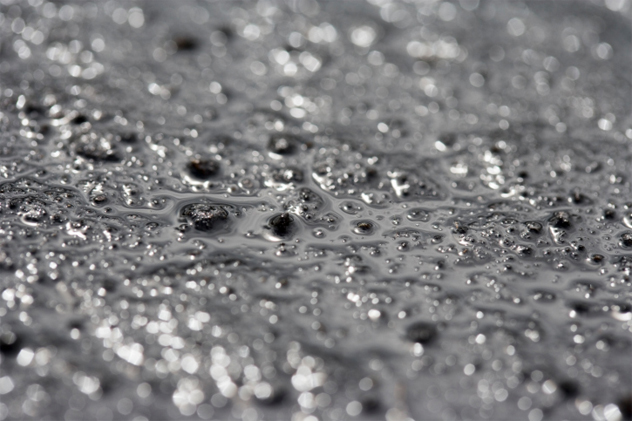
What does the ground below the water at the beach feel like? Most likely, it’s just a bunch of wet sand. Well, if you happened to keep swimming deeper, and deeper, and deeper, all the way down to the depths of the Trench, the ground would suddenly feel very, very different. That’s because, thanks to everything that trickles down from the miles above, everything in the Trench is covered in a blanket of icky, viscous ooze.
Sand as we know it doesn’t really exist down there. In its place is, well, a bunch of death. The floor of the Trench is comprised mainly of crushed shells and the corpses of plankton that have sunk to the bottom over the years. Due to the immense water pressure, everything pretty much ends up ground into a fine, grayish-yellow, almost silky sludge. Considering how long the Trench has been around (many scientists believe it to be the oldest place in the ocean), one can only wonder how deep the ooze floor goes down before Earth actually begins.
4 Liquid Sulfur
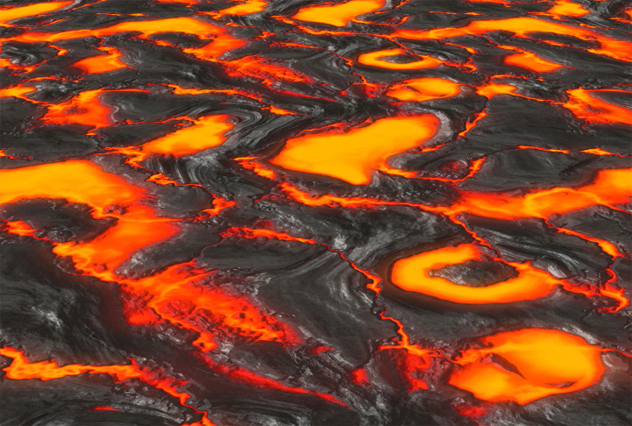
The underwater Daikoku Volcano lies roughly 40 atmospheres (414 m, or 1,360 ft) down into the Trench. That might not sound too impressive, since the Trench goes down another six and a half miles or so. But Daikoku happens to contain one of the rarest sights on the planet: a lake of pure molten sulfur. The only other place that houses such a thing is Io, one of the moons of Jupiter. You probably can’t afford the gas to get there, so it’s all but guaranteed you have never seen this phenomenon first-hand.
Dubbed the Cauldron for obvious reasons, this pit of bubbling black goo burns at a sweltering 187 °C (369 °F). We’ve not yet been able to study it in a lot of detail, though the white smoke that emanates from one of the surrounding craters suggests that there may be more sulfur down there than in just the Cauldron. If there is, the entire area might just hold the key to determining the origins of life.
The Gaia Hypothesis, a long-standing but oft-criticized view of the world, contends that the entire planet is a singular, self-regulating entity, where all life and non-life come together to help keep it alive. Researchers hope that, by capturing some of this sulfur and releasing it into the atmosphere, they can see if it both survives and cycles to land. If so, then there may be something to Gaia after all, and sulfur might be the reason Earth supports and maintains life.
3 Bridges

In late 2011, four rock bridges were found in the Mariana Trench, stretching from one end to the other (roughly 69 kilometers, or 43 mi). It appears that a meeting of the Pacific and Philippine tectonic plates formed the bridges; the Pacific plate ended up underneath the Philippine plate, and the seamount material that both sides brought along collided into various structures on the other side, turning it into what we see today.
One of the bridges, Dutton Ridge, was discovered back in the 1980s, though only in low-res pictures. It certainly helped matters that Dutton Ridge is incredibly tall, almost like a small mountain. At its highest peak, the Ridge reaches 2.5 kilometers (1.5 mi) above the Challenger Deep. Of course, that’s still more than 8 kilometers (5 mi) under the water. Researchers’ ability to find something in a Trench that, up until recently, was a near-complete mystery, is truly astounding.
Like so many other aspects of the Trench, we don’t yet know what purpose these bridges serve. After all, not too many aquatic creatures need bridges. Well, maybe the walking catfish, but they’re not exactly deep-sea divers.
2 A Monument
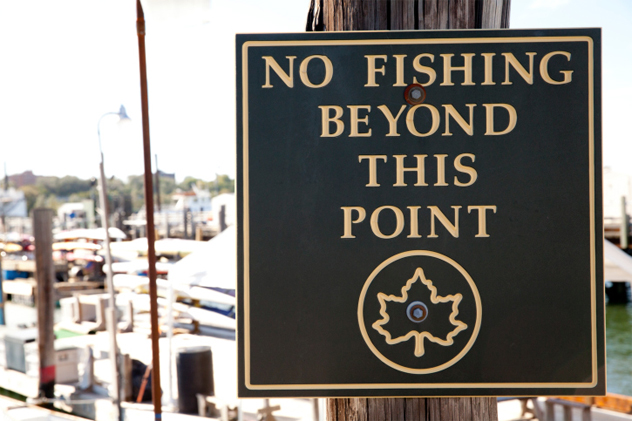
Sadly, nobody has erected a statue or set up an underwater tourist stop (yet). But the Mariana Trench is absolutely a monument, under the legal protection of the U.S.
In January 2009, President George W. Bush signed into law an act that designated the Mariana Trench as a national monument, spanning over 246,000 square kilometers (95,000 sq mi). It is the largest marine reserve in the world, even larger than the Papahânaumokuâkea Marine National Monument, also established by Bush in 2006.
Since it’s now a national monument and all, there’s a new set of house rules for anybody who wants to visit the Trench. Within those borders, fishing and mining are strictly prohibited, so leave your reels at home. Swimming is still legal though, so your bucket-list goal of reaching the deepest of deep depths is still doable.
1 Nothing
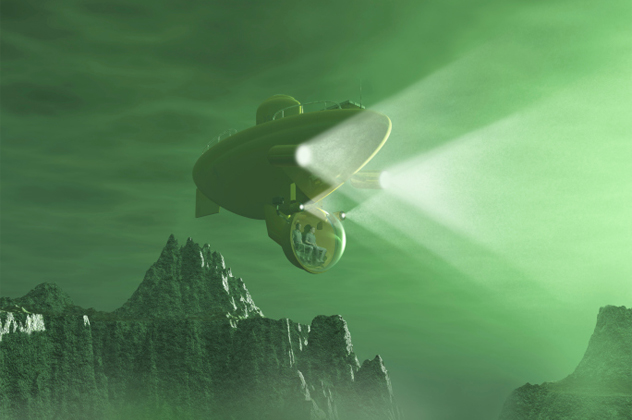
Obviously, we’re not going to sit here and say there’s nothing in the Mariana Trench whatsoever. That would be stupid, considering everything we’ve mentioned thus far. But no giant amoeba or freaky fish you might encounter on your way down will prepare you for what you’ll find at the very bottom: not a darn thing.
During James Cameron’s 2012 dive to the Challenger Deep, he observed as much as he could before mechanical failure forced him to return to the surface. While he was down there, he came to the shocking conclusion that, aside from the occasional inch-long prawns, he was very alone down there. There were no horrible sea monsters, no wonders of evolution, no brutal yet beautiful displays of nature at its most primitive. It was literally just James and his little metal ball, hanging around in an aquatic ghost town with nobody to talk to.
According to the man himself, the absolute bottom of the ocean is “lunar . . . desolate . . . isolated,” and that while down there, he felt “complete isolation from all of humanity.” Given what we’ve seen from the deep ocean, the revelation that there really isn’t a final boss to speak of is a surprising one, to say the least. Hopefully, future dives to the Challenger Deep will finally uncover that Cthulhu-esque nightmare we all pray exists.
Jason Iannone is a Cracked Columnist and Freelance Editor, who swam all the way to the bottom of the Mariana Trench to research this article. He held his breath the entire time. Lavish him with praise and adulation via Facebook, Twitter, and Tumblr.








